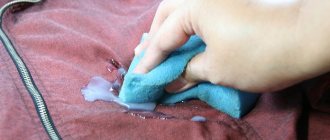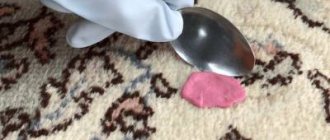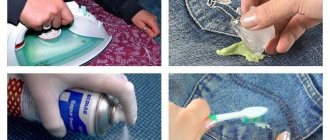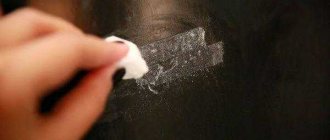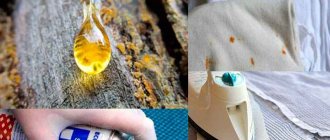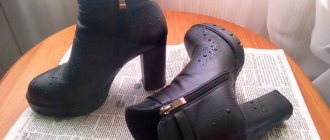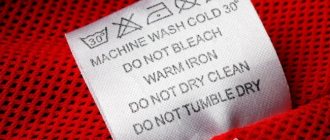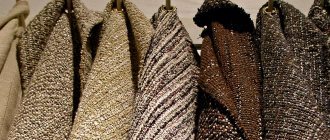The main secret to thoroughly caring for clothes is proper washing, drying and ironing. Items that are not properly cared for will likely not last long. So why take the risk of ruining your favorite clothes due to carelessness? It’s better to learn all the intricacies of care once and enjoy the quality and longest service life of the products. On each product we see new symbols, but some may be repeated. There are quite a lot of these symbols. Some of them are clear to us at first glance, while others still remain a mystery. In fact, these symbols are created to make our lives easier. After all, now there is no need to learn the rules of care for each fabric or its variety.
Creating the right conditions
Drying refers to the removal of residual moisture after the washing and spinning procedure. A universal method of hanging on a balcony or in an apartment is suitable for most types of clothing.
To keep your laundry fresh, a number of requirements must be met:
- the higher the air temperature, the faster the moisture will evaporate from the surface of the fabrics;
- low hanging density promotes rapid drying;
- active air circulation significantly speeds up the process.
Many city residents use batteries during the heating season. Linen dried in this way acquires rough creases and is difficult to further iron. If it is not possible to dry outdoors, it is recommended to use floor-mounted folding devices. During the drying process, the room must be thoroughly ventilated. Prolonged stay in a damp state contributes to the appearance of a musty smell from the laundry.
What does it mean to dry with a rotary drum?
In addition to drying clothes naturally, a common method is drumming to remove moisture. The restriction applies only to those types of fabrics that cannot be dried with a rotary drum. Modern machines are divided into washing machines with a built-in function, drying cabinets and those designed only to remove residual moisture.
A drying cabinet with a steam mannequin is a convenient option for gentle processing of delicate fabrics, shirts and synthetic items. But such a cabinet can rarely be found in everyday life and is mostly used in professional dry cleaners.
Blown with warm air, clothes quickly dry, smooth out and retain their original shape. The disadvantages include the high cost and free space in the house for the location and storage of the cabinet.
A conventional dryer works on the principle of blowing hot air over clothes and then condensing the evaporated water. All models have their own characteristics and programs that allow you to choose the optimal mode.
Important! Textile manufacturers always indicate the permitted methods for removing moisture using drying icons on clothing labels.
Basic character groups
Garment care icons are divided into five groups. Classification is carried out according to the action that can (or cannot) be carried out with the product. The group symbols and their meaning are presented in the table.
Table - Pictures to indicate groups, their meaning
Figure Meaning
| Basin with water | Washing rules |
| Square | Drying Features |
| Triangle | Is it possible to bleach |
| Circle | Professional cleaning (yes/no) |
| Iron | How to iron |
If the drawing is underlined, then the procedure for which it is “responsible” must be carried out carefully. Two lines below the image indicate that the product requires special delicate handling. Crossing out an icon indicates that the manipulation it represents cannot be done.
Signs on clothes
Basic principles for deciphering symbols on clothing labels:
- circle enclosed in a square - machine drying is allowed;
- number of points – from one to three, intensity level;
- a square without a circle with additional lines - natural drying.
If the drying icon is present in the washing machine, all other methods are also allowed.
Tumble drying
Natural drying
Modes that prohibit spinning before further drying involve draining excess liquid after rinsing in the sink or bathtub. When specifying a horizontal method, hanging is prohibited due to the risk of excessive stretching of the fabrics. If there is a “vertical drying without spin drying” icon on the clothes, it is allowed to use hangers or other means to speed up the process of water drainage.
Features of the first wash
Instructions for the first washing of clothes from experienced housewives:
- For color: soak the item for several hours in paint protectant or saline solution.
- Dissolve the powder or gel well when hand washing.
- Wash the item separately from others.
- To check if the fabric is fading, wet a small area with warm water and wring it out. Sometimes the manufacturer includes a fabric sample along with the label, experiment with it.
All icons on the labels are conveniently structured, so now you won’t get confused in the basic designations.
Additional drying methods
With a towel
One of the most versatile ways to speed up the drying of items that cannot be tumble dried is to spin them again with a clean towel. During torsion, the loose fabric will absorb the maximum amount of residual moisture, after which things will dry much faster.
The method may also be suitable for some delicate products for which spinning is prohibited. In this case, the item is carefully folded, wrapped in a towel and placed in a fabric bag of a suitable size. Then press at minimum speed.
To manually spin woolen products, they are laid out on a clean, dry towel and rolled up with a roller. Then, with little effort, roll it in different directions.
Excess moisture is intensively absorbed. If necessary, the procedure can be repeated. After preliminary removal of the liquid, the item is dried in the recommended way.
Using an iron
The easiest way to finish drying an item is to use high temperatures, but be sure to read the manufacturer’s ironing recommendations. If you do not wait for the product to dry completely, you can avoid the appearance of difficult to remove folds and creases. Ironing semi-dry items is comparable to intensive steaming. This removes any remaining liquid and gives the clothes an ideal appearance.
When using the iron for very damp items, it is recommended to place a thick terry towel underneath. When heated, the rate of water absorption will increase significantly, and the item will dry much faster. The steam function must be completely turned off. Particular attention should be paid to seams and tighter areas. During the ironing process, it is advisable to let the product cool on a hanger several times to speed up drying.
Also, many people ask the question, how to dry at a low temperature? For drum drying, this is the minimum value setting; for natural drying, heating devices are prohibited. Small and thin items can also be exposed to air flows from fans and air conditioners. Small tricks in everyday life will make life easier for a young housewife.
Iron - ironing
This sign is the easiest to recognize because its symbol is a diagrammatic iron (1).
- If the iron is crossed out (2), then ironing of the item is strictly prohibited.
- Inside the symbol you can see dots (3), which determine the temperature allowed for ironing the material. One point – delicate mode up to 110 degrees Celsius, two – up to 150, three – up to 200.
- When the appliance has two lines at the bottom, diverging in different directions (which indicates steam) and they are crossed out (4), the outfit cannot be steamed.
Calculating the time
Knowing how to quickly dry things, you can easily calculate the time it takes to dry them. This will come in handy if you only have one pair of jeans or only a pair of socks left without holes. Drying clothes occurs in the process of removing moisture from the fibers of the fabric, so the drying speed will depend on five factors.
- Spin. The better you wring out the item, the faster it will dry.
- Material. Clothes made from natural materials dry more slowly than synthetic items, since silk, linen and cotton absorb moisture well. It also takes a lot of time for dense fabric to dry.
- Air circulation. Moisture from wet laundry will remain “hanging” near the dryer, preventing further evaporation. Therefore, it is important to create a draft: open a window, turn on the air conditioner or fan.
- Air temperature . High and low temperatures are almost equally effective in drying clothes quickly.
- Hanging density. On the dryer, hang bulky items on top, and small items on a lower level. Free space on the counter will help clothes dry faster.
Whitening
Sometimes bleaches are used in the washing process. At this stage you need to be extremely careful. Some of them may leave a white spot or, in the worst case, a hole. So take a close look at your label.
and check if washing with bleach is allowed.
How to use bleach correctly?
| Bleaching is allowed. You can clean the product with chlorine and oxygen bleaches. |
| Bleaching is prohibited. Do not clean the product with chlorine or oxygen bleaches. |
| Chlorine bleaching is prohibited. You can only bleach with oxygen bleaches. |
| Chlorine bleaching is allowed. You can clean the product with chlorine-containing bleaches. |
Let's be smart on the trail
When going outdoors, you need to take care of a change of shoes and clothes. You might get caught in the rain, wade across a river, or just get sweaty. To avoid getting sick, you need to keep your clothes dry, so change into a spare set of underwear as soon as possible.
Wet clothes on a hike can be dried in the sun or wind. To do this, hang it on tree branches, ropes, and place it on an awning. Empty your pockets of all items and turn them outward. You can dry wet items overnight by placing them under your sleeping bag. During sleep, body heat will dry out your pants or sweatshirt.
Drying things by the fire should only be done as a last resort. Place them at some distance from the fire source so that only warmth is felt, not heat. Constantly monitor the state of things, one spark - and you risk being left without things at all.
What are textile labels made of?
Embedded textile labels are made from three types of materials:
- made of satin - such labels are very soft, the most popular, and do not cause discomfort;
- made of polyester and nylon - good for the price, but quite rigid, so they are used mainly in workwear;
- from rare materials such as Tyvek, nylon tape - most often found in exclusive products.
If a soft tag is sewn into clothing, it can be carefully trimmed, as is often evidenced by the corresponding symbol with scissors. The rigid labels are carefully pulled out of the seam, making sure that the seam itself does not come apart. A cut off hard label will irritate the skin.
Let's remember the rules...
Do not overuse accelerated drying - it leads to damage to the fabric fibers and faster wear of the item. To ensure that the product retains its shape and presentation during drying, pay attention to the following nuances:
- items of outerwear - dry on hangers with sleeves stuffed with paper;
- hats - wear on appropriately sized plates or bowls;
- shirts - fasten with buttons to avoid creases;
- hosiery - squeeze through the fabric and then hang by the toes;
- items made of knitwear and wool - dry on a horizontal surface;
- lace items - place them in fabric for half an hour, and then iron them immediately;
- silk blouses - wrap in terry cloth, hang on hangers, dry in a cool room.
...and warnings
Many experimenters, in pursuit of new ideas on how to dry clothes in 5 minutes, completely forget about safety precautions. The consequences can be dire. Forbidden:
- use open fire for drying;
- hang objects on an electric heating device;
- ignore the advice on the label;
- dry shoes on the radiator due to possible deformation of the soles.
There are many ways to dry wet things very quickly, they really help in a difficult situation. But always remember the negative side of this process. Think about washing in advance, try to dry your favorite things naturally, then they will delight you for a very long time.
Circle – dry cleaning
Circle (1) will tell you about the conditions of dry cleaning in specialized enterprises. There are pictures for regular “dry” cleaning.
- The crossed out circle (2) indicates that dry cleaning is prohibited.
- The letter A (3) indicates that treatment with any solvent is possible.
- The P icon in a circle (4) indicates that the procedure can be carried out with ethylene chloride, hydrocarbon, monofluorotrichloromethane.
- Underlined circle with the letter P (5) – the remedies from the previous version are valid, but the procedure itself is more gentle.
- Symbol F (6) allows the use of trifluorochloromethane and hydrocarbons.
- If the circle with F is underlined (7), then it is permissible to use the means described above, but in a delicate mode.
In addition to “dry” there is also “wet cleaning”. It has its own indicators, and the main one, which determines whether it is permissible to clean an object in this way, is a circle with the letter W (1):
- If the pictogram is crossed out (2), then water cleaning is impossible.
- When there is one horizontal line (3) under the symbol, you know that you need a delicate mode.
- A double underline (4) indicates the need for particularly careful procedure.
Precautionary measures
You should not thoughtlessly dry the product using the first, seemingly reasonable method you come across. This can ruin an item or household appliance. Here are a few tips to consider before you start drying:
- Under no circumstances should you dry things over a stove or other open fire sources. Firstly, some products may shrink. Secondly, the fabric is flammable; a very small thread can lead to a fire. At best, the clothes will be damaged, at worst, a fire will start.
- Do not dry clothes on electrical heating appliances, such as a heater. You can get an electric shock and cause a short circuit, which will ruin both your clothes and equipment.
- Also, do not neglect the instructions that are on the label. Thanks to them, you can find out what type of washing and drying is suitable for the fabric. For example, wool, silk and lace cannot be dried directly with an iron; they should only be ironed through gauze.
- A common mistake is to dry shoes on a radiator. However, this is strictly forbidden. Because of this method, the sole becomes deformed and quickly becomes unusable. You need to wash shoes and sneakers in a special bag.
- You should not resort to emergency drying too often, as this is a lot of stress for the fabric. The item can quickly wear out and become unusable.
Quick drying methods
Of course, it's best to wash your clothes in advance to allow time for drying. However, especially for emergency situations, there are several ways that will help dry the item after washing quickly and efficiently. Some of them can do it even in 5 minutes.
Important! Remember to read instruction labels before choosing a drying method. This precaution will save the life of your products.
Heating battery
This method is suitable if you have a couple of hours left.
It will be especially effective if it is a cold season outside, that is, the heating season. Drying a small item of clothing on hot radiators will take no more than an hour. Cold heating devices have no advantage over a clothesline.
A summer alternative to radiators is drying clothes on the street or balcony. The sun, hot weather and warm wind will do their job. But if it’s raining outside, there’s no point in this method.
In addition to seasonality, there are several other disadvantages of drying on a battery:
- You won't be able to hang a lot of clothes, especially if you live in an apartment.
- Wool, silk and other delicate fabrics lose their shape if dried using “hot” methods. On light-colored items made from such materials, white spots also appear that cannot be washed off.
- If you leave the products to dry for a long time, they will lose their shape.
The iron copes well with the task, however, it cannot dry some types of fabrics. Instead of an iron, you can use other devices.
If the iron does not harm things, here's what you should do:
- Turn on non-steaming mode.
- Iron the item until it is dry.
- When you come into contact with the hot sole of the iron, moisture will evaporate from the clothes, and they will very quickly become ready to wear.
This method can dry any small item: socks, underwear, scarves or light T-shirts, tops. It will not be possible to do this with large products, especially those made of dense materials.
However, if you have a couple of hours to spare, you can blow dry delicate fabrics that cannot be treated with other methods.
Oven
An oven will help you quickly dry the clothes you need. To do this, warm it up well and open the door. Clothes that need to be dried should be hung near the stove (for example, on a chair). It is recommended to turn the product over periodically so that it dries evenly. Please note that the oven must be clean, otherwise your clothes may smell like food.
Important! Clothes should not be placed on the oven door or placed inside. This may cause a fire.
Microwave
A very unconventional, however, method that has proven itself is to heat things in a microwave oven. As with the oven, the microwave should be cleaned. Several small items or one medium item should be placed in the oven for half a minute. If the clothes are not dry, put them on for the same amount.
Attention! Follow the process, do not leave the microwave, and do not dry things with metal parts in the device.
Washing machine
Many, especially modern, models have a spin and dry function. To dry, you just need to put your clothes in the washing machine and turn on the desired mode. For greater efficiency, you can add dry terry towels along with your clothes - they will additionally absorb water.
The disadvantage of this method is that the machine leaves the fabric slightly damp, so you will have to dry the clothes using one of the other methods.
Electric dryer or fan
Not long ago, special electric dryers and fans appeared that will do all the work for you.
When using an electric dryer, you should read the instructions.
A fan helps dry things faster by moving warm air around the room. You could say this is a big hairdryer.
This technique copes with its task in about half an hour.
Choosing a method depending on the type of clothing and fabric
In order not to spoil your clothes, you need to know how this or that type of fabric can be dried correctly. Most often, the product label indicates the permissible temperature conditions and type of drying.
Thick fabrics: trousers, jacket, jacket
Obviously, the denser and warmer the material from which the item is made, the longer it will take to dry.
Here's how to quickly dry your pants after washing:
- Draft, sun.
- Electric dryer.
- Iron.
- Hairdryer or fan.
The most effective way is to dry the trousers with a hairdryer, not forgetting the seams, and then dry them completely with an iron through gauze.
Wool sweaters can be kept dry using terry towels. Clothes are wrapped in them, trying not to deform things, and then they are blotted and blown with a hairdryer.
Natural drying is best suited for winter and autumn outerwear. However, if you need to dry your jacket quickly, you should use the following methods:
- Hair dryer.
- Heat fan.
The down jacket can be dried with a hairdryer with cold air, as well as with the help of sunlight.
Important! Down jackets and jackets should not be dried in a washing machine, near fire or electrical appliances.
There is a rather unusual way of drying down jackets using a vacuum cleaner. To do this, the clothes are placed in a large plastic bag, and the air is sucked out of it with a vacuum cleaner. Then the “blowing” function is turned on, the air returns back, drying the down jacket.
Cotton: T-shirts, shirts
T-shirts, cotton and linen T-shirts are wrung out manually or in a machine after washing. You can quickly dry a T-shirt using an electric dryer or iron. In the first case, the process will take 20-30 minutes, in the second – about 15 minutes. Blow drying will also work, but will take a long time.
Important! Dyed cotton should not be machine dried.
Some general care tips
If you follow all the recommendations on the label, problems usually do not arise, but there are also additional tricks:
- Separate white, multi-colored, black and red - separately, these piles better retain their shade.
- Wash synthetics, wool and cotton separately, even if they are specified at the same temperature - they need different wash times, and the cotton lint wraps around the synthetic fibers, causing both materials to form pills.
- Be sure to check your pockets! Accidentally forgetting a notebook for notes after one wash will disfigure the entire load of laundry with small specks of paper crumbs, which will take a long time to clean off with a vacuum cleaner or clothes roller. And coins or nails will leave a legacy of rusty stains. The handles are not worth mentioning. These spots are unlikely to go away quickly.
- It is better to turn tights, socks, knee socks and generally all knitwear, including T-shirts, inside out - this way there will be fewer pills or they will hide on the inside out.
- Never wash clothes with shoes.
- If the item is delicate and has accumulated a lot of dust, so that a short cycle will not cope, do not add either time or washing gel - this will damage either the item or the device. Throw special laundry balls or 3-4 white tennis balls into the drum.
